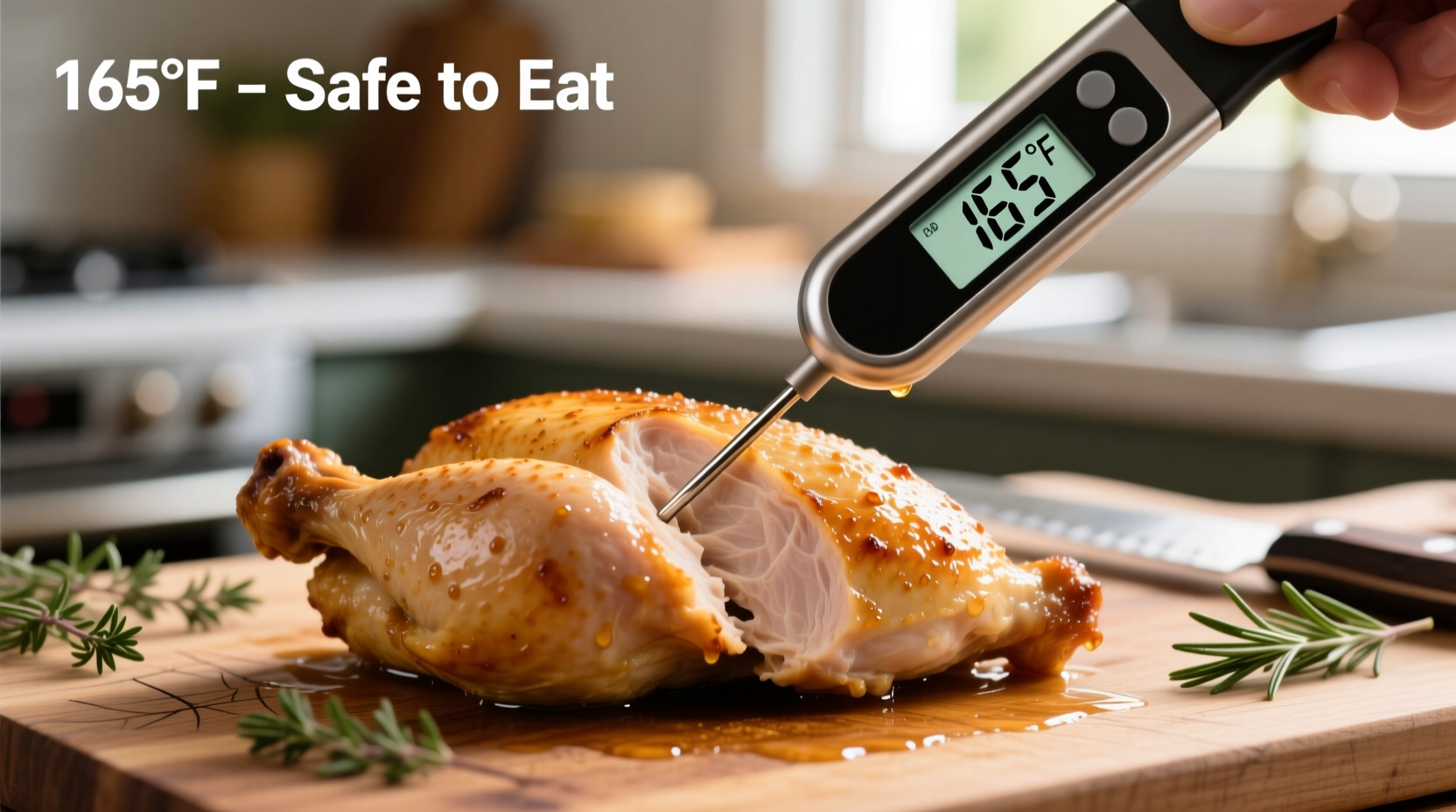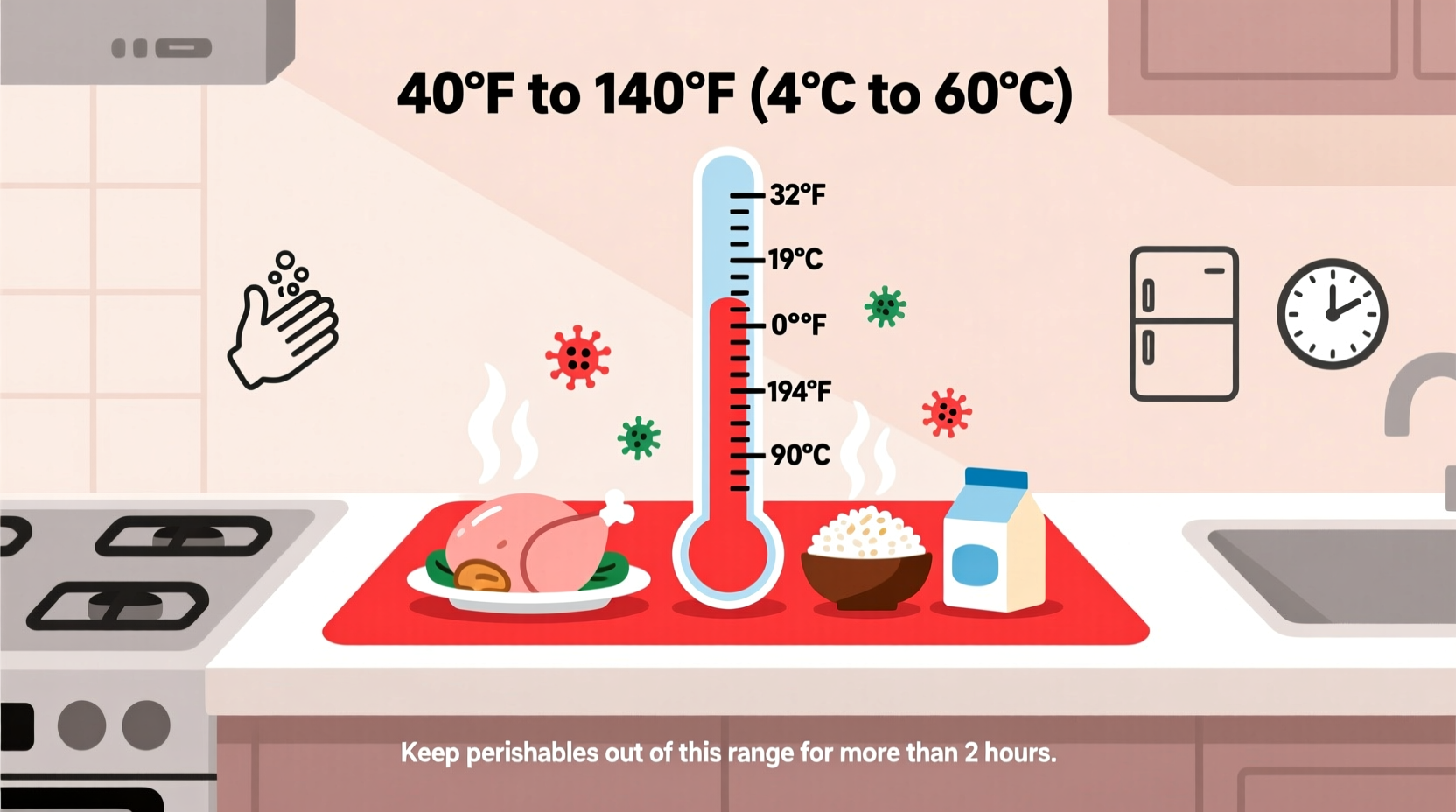Why Understanding the Temperature Danger Zone Could Save You From Food Poisoning
Every year, 1 in 6 Americans suffers from foodborne illness according to the CDC. Most cases stem from improper temperature control during food preparation, storage, or serving. When you understand and respect the temperature danger zone, you're taking the single most effective step to protect yourself and others from preventable illness.
What Happens Inside the Danger Zone
Bacteria don't just exist in food—they thrive under specific conditions. The 40°F to 140°F range creates the perfect storm for bacterial growth:
- 40°F-70°F (4.4°C-21°C): Bacteria begin multiplying slowly
- 70°F-125°F (21°C-52°C): Rapid multiplication phase (most dangerous range)
- 125°F-140°F (52°C-60°C): Bacteria growth slows but doesn't stop
Pathogens like Salmonella, E. coli, and Listeria can reach dangerous levels in just two hours when food sits in this temperature range. At summer picnic temperatures (above 90°F), that window shrinks to just one hour.

How Bacteria Multiply: The 20-Minute Rule You Can't Ignore
Understanding bacterial growth patterns explains why time matters as much as temperature. When food enters the danger zone:
| Time in Danger Zone | Bacterial Growth | Food Safety Risk |
|---|---|---|
| 20 minutes | Population doubles | Low risk |
| 1 hour | 8x original amount | Moderate risk |
| 2 hours | 64x original amount | High risk - discard food |
| 4 hours | 4,096x original amount | Extreme risk - potential illness |
This exponential growth pattern is why the USDA's "2-hour rule" exists: perishable food shouldn't remain in the danger zone for more than two hours (one hour when temperatures exceed 90°F).
Your Complete Temperature Control Action Plan
Cold Food: Staying Below 40°F
Refrigeration slows but doesn't stop bacterial growth. For maximum safety:
- Set refrigerator to 40°F or below (use a separate thermometer for accuracy)
- Store raw meat on the bottom shelf to prevent cross-contamination
- Divide large portions into shallow containers for faster cooling
- Thaw frozen foods in the refrigerator, not on the counter
Hot Food: Maintaining Above 140°F
When serving hot foods buffet-style or during events:
- Use chafing dishes with heat sources
- Rotate small batches from the oven rather than keeping everything hot for hours
- Discard any hot food that falls below 140°F for more than two hours
Critical Cooking Temperatures You Must Hit
Reaching proper internal temperatures destroys existing bacteria. Use a food thermometer to verify:
| Food Type | Safe Minimum Internal Temperature | Time at Temperature |
|---|---|---|
| Poultry (chicken, turkey) | 165°F (73.9°C) | Instant |
| Ground meats | 160°F (71.1°C) | Instant |
| Steaks, roasts, fish | 145°F (62.8°C) | 3 minutes |
| Leftovers, casseroles | 165°F (73.9°C) | Instant |
Avoiding Common Temperature Danger Zone Mistakes
Even experienced cooks make these critical errors that put food in the danger zone:
- The "Room Temperature" Myth: Letting food sit out to reach room temperature before cooking actually creates a bacterial breeding ground. Cook directly from refrigeration.
- Guessing Doneness: Relying on color or texture instead of a thermometer leaves you vulnerable. Chicken can appear cooked at 140°F but still harbor dangerous pathogens.
- Improper Cooling: Placing large pots of soup directly in the refrigerator warms surrounding foods into the danger zone. Use an ice bath first.
- Hot Holding Failures: Assuming food stays hot enough in a slow cooker on 'warm' setting. Verify with a thermometer.
Special Situations Requiring Extra Caution
Outdoor Cooking and Events
When grilling or serving outdoors, temperature control becomes more challenging:
- Use insulated carriers to transport cold foods
- Keep hot foods in thermal containers
- Never leave food sitting out during extended events
- Monitor ambient temperatures—when it's above 90°F, reduce the danger zone window to 1 hour
Cooling Leftovers Properly
Improper cooling causes more foodborne illness than any other stage in home food preparation. Follow these steps:
- Divide large portions into shallow containers (no more than 2 inches deep)
- Cool food from 140°F to 70°F within 2 hours
- Cool food from 70°F to 40°F within an additional 4 hours
- Stir soups and sauces frequently during cooling to release heat
The FDA Food Code specifies this two-stage cooling method to minimize time spent in the danger zone during the critical cooling process.
Temperature Danger Zone Myths Debunked
Myth: "If it smells okay, it's safe to eat."
Truth: Harmful bacteria like Staphylococcus aureus produce toxins that don't affect smell or appearance.
Myth: "A little pink in the chicken is fine if it's been cooking a long time."
Truth: Color is unreliable. Chicken must reach 165°F internally regardless of appearance.
Myth: "The refrigerator keeps food from going bad indefinitely."
Truth: While refrigeration slows bacterial growth, pathogens like Listeria can still multiply at cold temperatures over time.
Essential Tools for Temperature Control
Investing in these tools puts you in control of the temperature danger zone:
- Digital instant-read thermometer: Provides accurate readings in 3-5 seconds
- Refrigerator/freezer thermometer: Monitors actual appliance temperatures
- Cooler with ice packs: For safe food transport
- Thermal containers: For maintaining hot food temperatures
Calibrate your thermometer regularly using the ice water (32°F/0°C) or boiling water (212°F/100°C) methods to ensure accuracy.
When in Doubt, Throw It Out
No guideline replaces good judgment. If you're uncertain whether food has been in the danger zone too long, discard it. The USDA estimates Americans waste 30-40% of food, but consuming questionable food risks serious illness that could land you in the hospital—far more costly than replacing the food.











 浙公网安备
33010002000092号
浙公网安备
33010002000092号 浙B2-20120091-4
浙B2-20120091-4